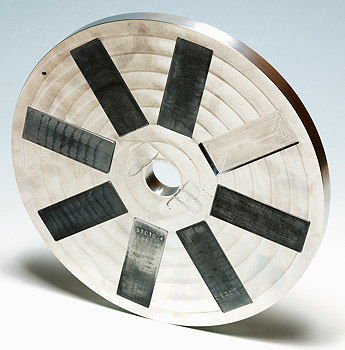- Home » News » Technology News
Matrix composites slash motor rotor weights by 40%

A collaborative UK project has shown that the efficiency and performance of electric motors can be improved significantly, and their rotor weights cut by 40%, by using rotors formed from aluminium matrix composites (AMCs). Other potential benefits include faster assembly times, and optimised strength-to-weight and stiffness-to-weight ratios, even in continuous products. The technology could also have benefits for other rotating machines, including fans, flywheels and turbines.
The project was led by the Basingstoke-based AMC specialist Alvant and backed by the funding agency, Innovate UK. The consortium included the Oxford-based motor manufacturer Yasa Motors, as well as GE Aviation and the National Composites Centre.
Alvant’s proprietary Advanced Liquid Pressure Forming (ALPF) technology reinforces areas of a component selectively using high-performance materials produced using a near-net-shape manufacturing technology. Alternatively, the materials can be used as inserts within a component, cutting costs where an array of similar inserts is used.
In ALPF, aluminium, acting as the matrix, is brought together with a high-strength reinforcement fibre, to create a high-performance AMC material.
The project has shown that using AMCs in the rotor of an axial-flux motor can save a considerable weight. The reduced mass and forces means that the number of fixing bolts can be reduced, cutting costs and assembly times.
“Using AMCs, we have been able to attack the weight, yet retain the stiffness of the electric rotor, to minimise parasitic mass, improving the power-to-inertia ratio and therefore efficiency and responsiveness,” explains Alvant’s commercial director, Richard Thompson. “In addition, we can also offer better thermal resistance, up to 300°C, making AMCs a more suitable material than polymer composites for applications such as motors, batteries, energy recovery systems, fans and flywheels.”

The technology is also said to be more sustainable, because the fibres can be separated from the aluminium at the end of a product’s life. “Designers must increasingly factor whole-life cost into design and it’s an area where AMCs score well,” Thompson points out.
While the collaborative project focussed on rotors for passenger cars, Alvant’s own research has demonstrated the benefits of adopting AMCs in a variety of high-stress and high-temperature applications in sectors such as aerospace, automotive, consumer goods and defence.
Alvant was originally established in 2003 as CMT.





